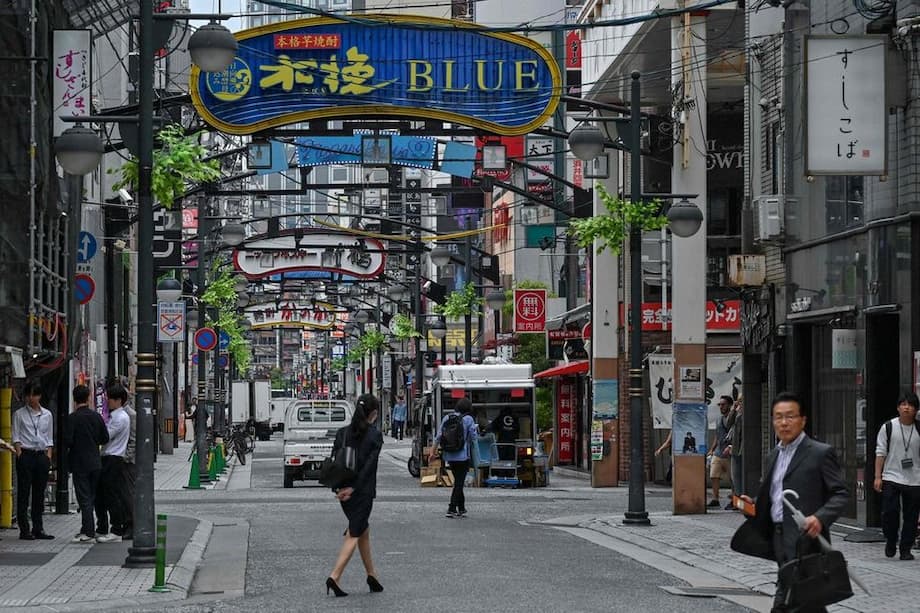Japan’s Experiential Tourism Surge: A New Era for Travelers and Locals
Japan is experiencing an unprecedented tourism boom, with a record 37 million visitors in 2024—a nearly 50 percent jump from the previous year. This surge is not just about numbers; it’s about a profound shift in what travelers seek and how locals are responding. The combination of a weaker yen, the magnetic pull of social media influencers, and a global appetite for unique experiences has transformed Japan into a playground for quirky, offbeat, and deeply immersive tours. For both visitors and enterprising residents, this new wave of experiential tourism is rewriting the rules of travel and local entrepreneurship.
- Japan’s Experiential Tourism Surge: A New Era for Travelers and Locals
- What’s Fueling the Boom? Currency, Culture, and Social Media
- Meet the New Tour Entrepreneurs: From Drift Racing to Bar Crawls
- Quirky Experiences: From Hidden Neighborhoods to Culinary Adventures
- Strange and Wonderful: The Allure of the Unusual
- Culinary Tourism: From Street Food to Luxury Dining
- The Business of Experience: Investments and Market Trends
- Challenges and Cultural Shifts: Navigating the New Tourism Landscape
- Why Are Travelers Choosing Quirky Experiences?
- In Summary
What’s Fueling the Boom? Currency, Culture, and Social Media
The yen’s depreciation has made Japan an affordable destination for Americans, Europeans, and travelers from across Asia. But affordability is only part of the story. Social media platforms like Instagram and TikTok have turned Japan’s hidden gems, quirky neighborhoods, and unusual activities into viral sensations. As a result, tourists are no longer satisfied with ticking off the Golden Route (Tokyo, Kyoto, Osaka); they crave authentic, personalized adventures that go beyond the guidebook.
According to Travel And Tour World, this trend is global. Travelers from China, South Korea, Taiwan, Hong Kong, the US, Australia, and Southeast Asia are flocking to Japan, seeking not just sights, but emotional connections and memorable experiences. The Japanese government and tourism authorities have responded with targeted campaigns and new infrastructure, but much of the innovation is coming from the ground up—by locals who see opportunity in the experience economy.
Meet the New Tour Entrepreneurs: From Drift Racing to Bar Crawls
One of the most striking features of Japan’s tourism renaissance is the rise of local entrepreneurs offering highly specialized, sometimes downright quirky, tours. Laurence Takeshi Jeffers, a former securities trader, left his corporate job to launch Matnero&Co, a business that guides tourists through Japan’s underground sports-car scene. His tours include car meet-ups and lessons in drifting—a motorsport technique born in Japan and glamorized by the Fast & Furious franchise. Jeffers’ business has seen rapid growth, with sales surging as more visitors seek adrenaline-fueled, insider experiences.
Meanwhile, Ryota Maruoka, a university student, founded Trip Port to lead bar-hopping tours in Tokyo’s Shibuya district. What began as a nightlife adventure has expanded to include cycling tours and calligraphy classes, reflecting the growing demand for activities that go beyond sightseeing. Entrepreneurs like Kensuke Ko have also jumped in, launching companies such as Yatra, which offers bar tours and works with a network of part-time guides across Japan.
As Bloomberg and The Straits Times report, these businesses are thriving because they fill a gap: traditional tours often miss the personal, offbeat, and sometimes eccentric experiences that today’s travelers crave. Market research predicts that by 2025, customized travel will account for 68 percent of Japan’s tourism market—a staggering shift from the group tours of the past.
Quirky Experiences: From Hidden Neighborhoods to Culinary Adventures
Japan’s appeal lies in its contrasts: ancient temples and neon-lit cityscapes, serene gardens and bustling arcades, refined tea ceremonies and wild nightlife. But the new wave of tourism is about discovering the country’s lesser-known sides. Travelers are venturing off the beaten path, guided by locals who know where to find the truly unique.
Tokyo’s Funky Neighborhoods
Take Shimokitazawa, a bohemian enclave in Tokyo known for its vintage shops, cozy cafés, and indie music venues. As Unseen Japan details, Shimokitazawa has resisted overdevelopment, preserving its creative spirit and attracting visitors who want to experience Tokyo’s retro culture. The area’s annual curry festival, thriving café scene, and green spaces offer a refreshing alternative to the city’s more touristy districts.
Osaka’s Offbeat Attractions
Osaka, often overshadowed by Tokyo and Kyoto, is a treasure trove of unusual experiences. According to Culture Trip, visitors can explore the Liberty Osaka Human Rights Museum, enjoy drinks at a reptile café, or create their own instant ramen at the Momofuku Ando Instant Ramen Museum. The city’s standing bars, Victorian horror-themed pubs, and in-home cooking lessons with local mothers provide a window into everyday Japanese life that most tourists never see.
Hidden Gems Across Japan
Beyond the cities, Japan’s regions are full of surprises. The Japanese Alps offer cool mountain air and tranquil towns like Takayama, known as “Little Kyoto” for its preserved Edo-era streets and hot spring onsens. The Setouchi Islands blend art, cycling, and fishing village charm, while Shikoku’s Iya Valley boasts vine bridges and dramatic gorges. In Kyushu, visitors can explore Okinawa’s beaches or Kumamoto’s historic castle. Each region offers unique cultural, historical, and natural experiences away from the crowds, as highlighted by The Invisible Tourist and Travel + Leisure.
Strange and Wonderful: The Allure of the Unusual
Part of Japan’s charm is its embrace of the quirky and the unconventional. Travelers are drawn to experiences that are both strange and uniquely Japanese:
- Gaming Arcades: From Tokyo to remote islands, arcades are alive and thriving, attracting everyone from schoolkids to salarymen.
- Vending Machines: Japan’s vending machines are legendary, offering everything from hot coffee to umbrellas and even toys.
- Love Hotels and Sex Shops: For the adventurous, exploring Tokyo’s Akihabara district or booking a night in a love hotel is a rite of passage.
- Food Adventures: Quirky food tours introduce visitors to delicacies like conger eel sushi, horse meat, and even whale—always with context and choice, as one TripAdvisor reviewer noted.
- Slurping Ramen: Participating in the symphony of ramen slurping is both a culinary and cultural experience.
These activities, described by All Japan Travel and echoed in personal accounts on BuzzFeed, are not just novelties—they’re windows into Japanese society, customs, and humor.
Culinary Tourism: From Street Food to Luxury Dining
Japan’s food scene is a major draw for tourists, blending tradition, innovation, and a touch of the bizarre. Street food stalls, quirky cafés, and Michelin-starred restaurants offer something for every palate. According to Travel And Tour World, culinary tourism is transforming Japan into a must-visit destination for food lovers. Visitors can sample everything from Osaka’s mixed juice and Hakata ramen in Fukuoka to matcha in Uji and sake in Takayama.
Luxury hotels are also getting in on the act, offering exclusive cooking classes and menus that fuse local street flavors with high-end dining. The Ritz-Carlton Tokyo, The Four Seasons Kyoto, and boutique ryokans in Kanazawa and the Setouchi Islands are just a few examples of how Japan is elevating the food experience for travelers.
The Business of Experience: Investments and Market Trends
The boom in experiential tourism is not just a grassroots phenomenon. Major investments are flowing into the sector. The Cool Japan Fund recently invested in Inside Travel Group, a UK-based company specializing in tailored cultural and adventure tours in Japan. This partnership aims to attract more international visitors by offering unique, small-group experiences that go beyond the standard itinerary.
Market analysts predict that if inbound tourism spending meets government targets by 2030, it could rival the economic impact of Japan’s automotive sector. Customized travel is expected to dominate the market, with repeat visitors spending more on local, cultural, and adventure experiences. However, experts caution that the sector faces risks, including currency fluctuations and shifting tourist preferences. If the yen strengthens or trends change, some of these quirky businesses may struggle to survive.
Challenges and Cultural Shifts: Navigating the New Tourism Landscape
While the tourism boom is boosting Japan’s economy, it also brings challenges. Popular destinations like Kyoto are grappling with overcrowding, rising temperatures, and the strain on local infrastructure. The influx of foreign visitors has exposed gaps in language accessibility and the need for more personalized services. Japanese authorities are responding with new policies, improved infrastructure, and efforts to promote responsible tourism.
There’s also a cultural shift underway. As BuzzFeed and other sources note, visitors are often surprised by Japanese customs—such as the absence of tipping, the etiquette of bathing in onsens, and the quiet, reserved nature of public spaces. These culture shocks are part of the adventure, but they also require sensitivity and adaptation from both tourists and hosts.
Why Are Travelers Choosing Quirky Experiences?
The rise of quirky experiential tours in Japan reflects a broader trend in global travel: a desire for authenticity, connection, and stories worth sharing. Today’s tourists want to:
- Go beyond sightseeing and engage with local culture
- Participate in hands-on activities, from drifting lessons to calligraphy
- Explore hidden neighborhoods and off-the-beaten-path destinations
- Try unusual foods and embrace new customs
- Support local entrepreneurs and communities
As one travel expert told Travel + Leisure:
“Many travelers want to experience the country beyond the usual touristy hotspots. The best memories come from crowd-free adventures, local encounters, and unique experiences you can’t find anywhere else.”
In Summary
- Japan’s tourism boom is driven by a weak yen, social media, and a global appetite for unique experiences.
- Local entrepreneurs are creating quirky, immersive tours—from drift racing to bar crawls and calligraphy classes.
- Travelers are seeking offbeat adventures in hidden neighborhoods, mountain towns, and regional gems across Japan.
- Strange and wonderful experiences—arcades, vending machines, love hotels, and food tours—are part of Japan’s appeal.
- Culinary tourism is booming, with street food, quirky cafés, and luxury dining attracting food lovers worldwide.
- Major investments and market trends point to customized travel dominating Japan’s tourism sector by 2025.
- Challenges include overcrowding, infrastructure needs, and adapting to cultural differences.
- The future of Japan’s tourism lies in authentic, personalized, and memorable experiences that connect travelers with the heart of the country.












